How to dry clothes indoors without a dryer: 13 expert tips and tricks
No tumble dryer? No problem. We break down how to dry clothes indoors more effectively during colder months
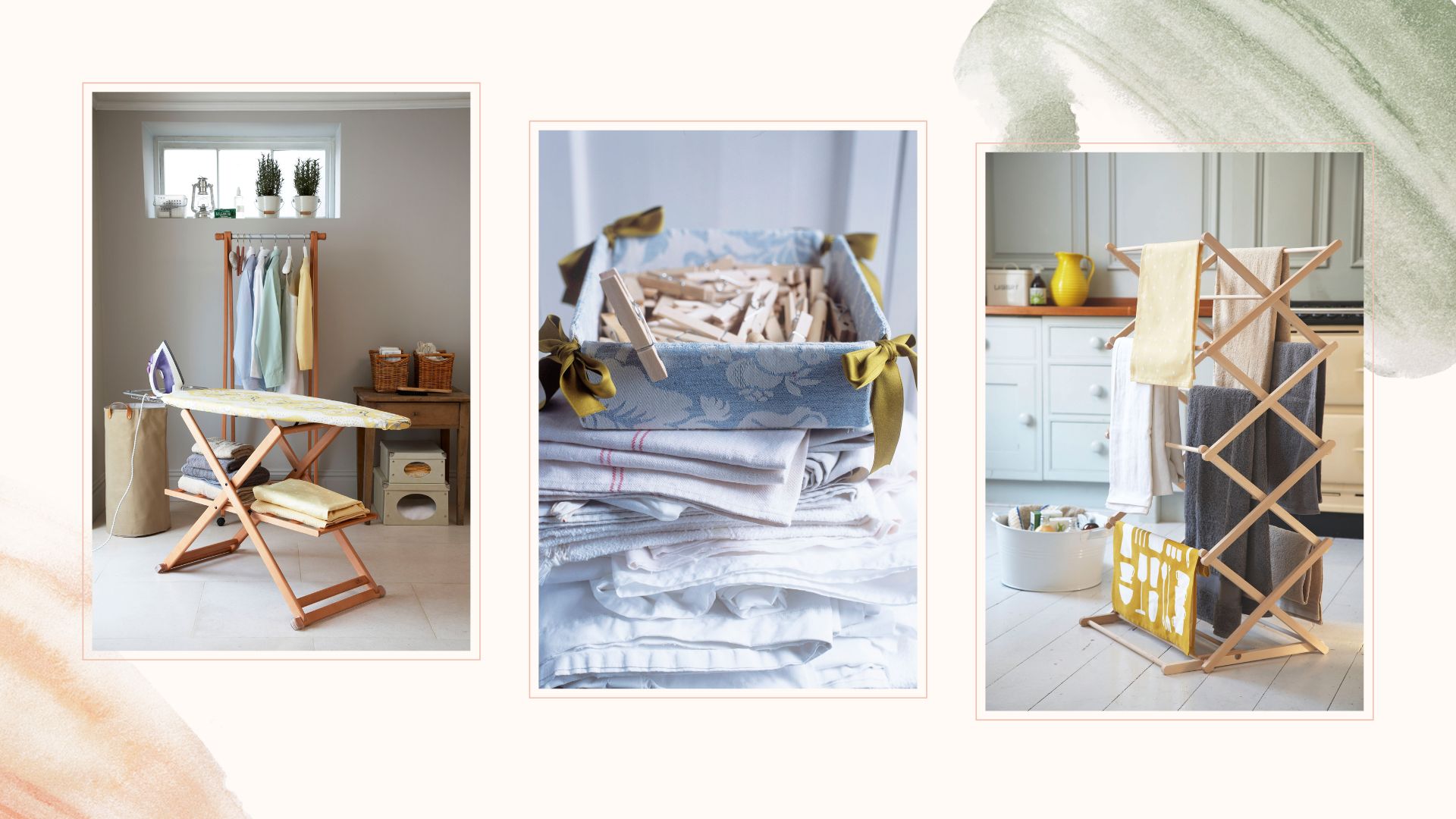

Knowing how to dry clothes indoors is all-important during the winter months as laundry can quickly become damp if left for too long in cold conditions.
Drying clothes and household linens during summer is a far easier task, as our homes and gardens are naturally warmer so clothes can air dry quickly. However, in the cooler winter temperatures, drying clothes outside simply isn't an option for many and clothes can take longer to dry inside due to the cold air.
From using the best heated clothes airers to savvy laundry hacks, we've chatted to experts in laundry care who explain how you can dry your laundry at home in winter - and fast.
How to dry your clothes indoors without a dryer
Despite best efforts to keep homes warmer in winter, it still poses a problem when you don't own a dryer or feel reluctant to crank the heating up to do the laundry.
From making a DIY drying pod to using a fan, these tips are genius for drying washing indoors more efficiently during winter.
1. Remove excess water with an extra spin
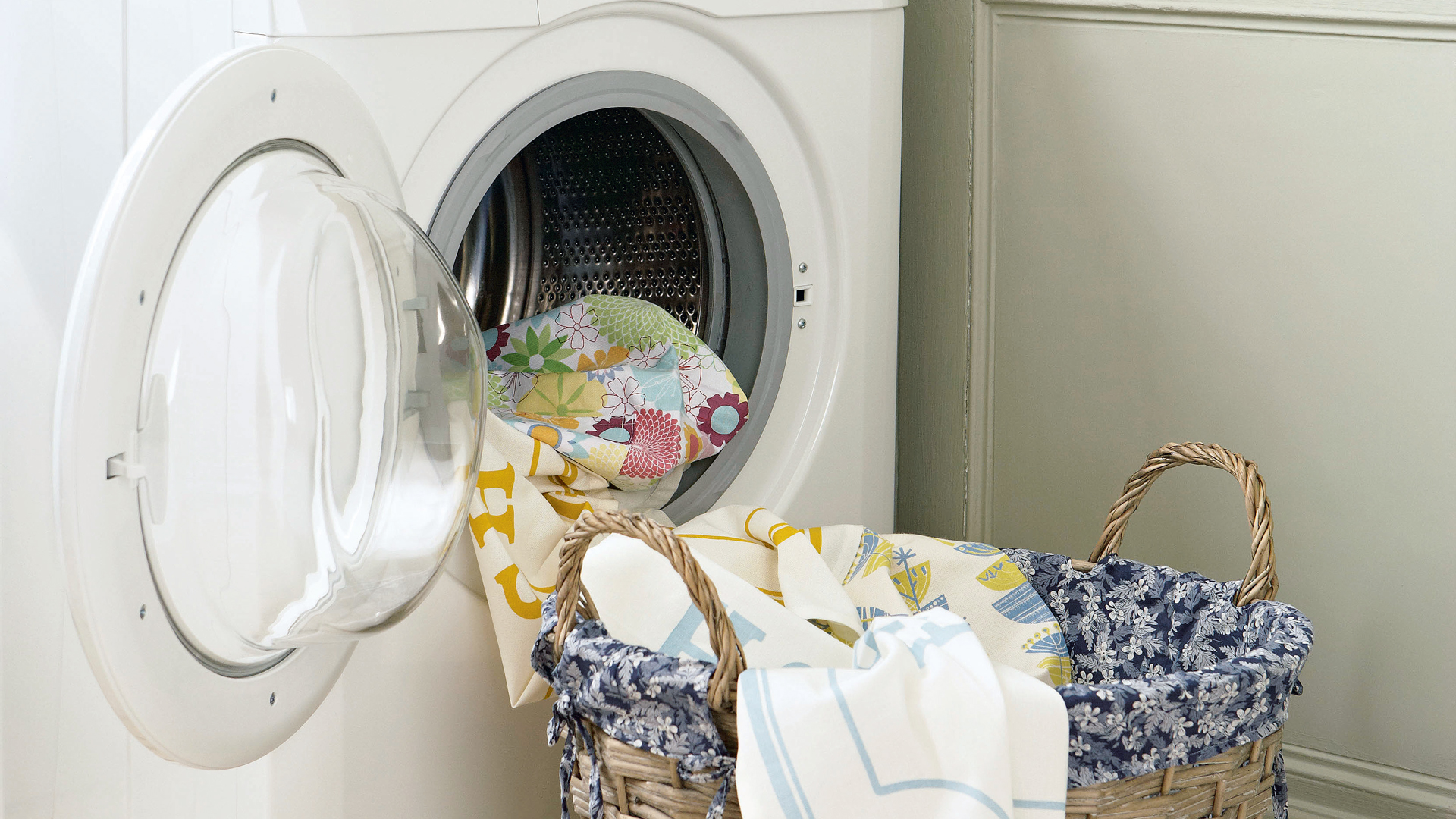
Rather than immediately removing your laundry load once the cycle has finished Lynsey Crombie, a cleaning expert and best-selling author advises carrying out a further rinse cycle.
"Before emptying your washing machine give it an extra spin," she says. "This normally takes 10 minutes but will remove a lot of the excess water and speed up drying time."
Sign up for the woman&home newsletter
Sign up to our free daily email for the latest royal and entertainment news, interesting opinion, expert advice on styling and beauty trends, and no-nonsense guides to the health and wellness questions you want answered.
2. Hang garments from curtain rails
Utilise curtain poles as alternative clothes hanging rails. These provide the ideal place to hang out fresh laundry with immediate access to airflow from open windows to speed up drying times. Many curtain rails also benefit from the warm radiators below which provide rising heat to speed up drying times.
"Pop clothes on clothes hangers and hang them on your curtain rail in bedrooms and spare rooms and they will dry within the day," says Lynsey. "You can also use your shower rail for this purpose too," made all the warmer if there is a heated towel rail nearby.
Hanging clothes on hangers also reduces the risk of stubborn creases, making the task of ironing quicker. Be sure to only do this in rooms that are not on show, to avoid making one of the most exposing laundry mistakes that can make your home look untidy.
3. Remove cold air and moisture with a dehumidifier

A dehumidifier is good for drying clothes indoors more efficiently."Use a dehumidifier as these collect the moisture and dry clothing indoors quicker than air drying," advises Lynsey.
Chris Michael from Meaco breaks down how dehumidifiers work to explain why they are a useful drying aid, adding that "dehumidifiers reduce the level of humidity by sucking in air from the room, removing the moisture, and then blowing the warm, dry air back into the room again.
"This can help to remove the ‘damp chill’ factor in the air, so the central heating could run at a lower temperature or even be switched off. It will help you dry your laundry and prevent condensation from forming on the windows and mould from growing on the walls, your clothes, and furniture.
"Dehumidifiers are not only effective at drying washing indoors, they use considerably less electricity than tumble dryers. They can cost as little as 8p per hour to run," Chris adds. "Look for the best dehumidifiers with a dedicated laundry mode where the machine runs up to six hours before switching itself off to save energy."
Don't mistake an air purifier for a dehumidifier; they are often compared but are two different things. Also, consider how much it costs to run a dehumidifier to calculate your energy usage. While testing dehumidifiers we found these models to be the best for helping dry clothes indoors...
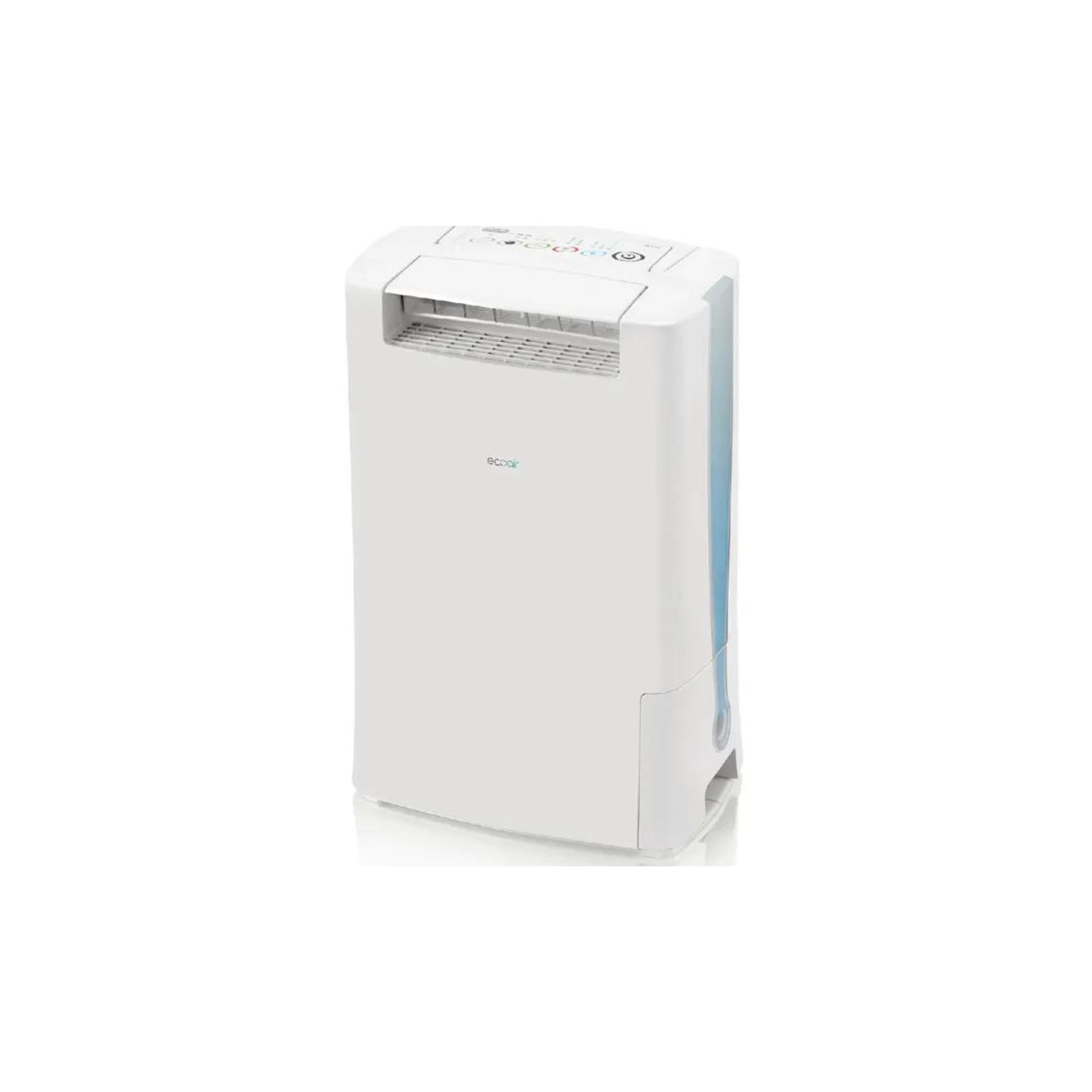
When testing dehumidifiers we found this EcoAir dehumidifier to be the best for drying clothes quickly. The Desiccant 8L features three drying modes and two laundry settings to make it a dream to dry clothes indoors.
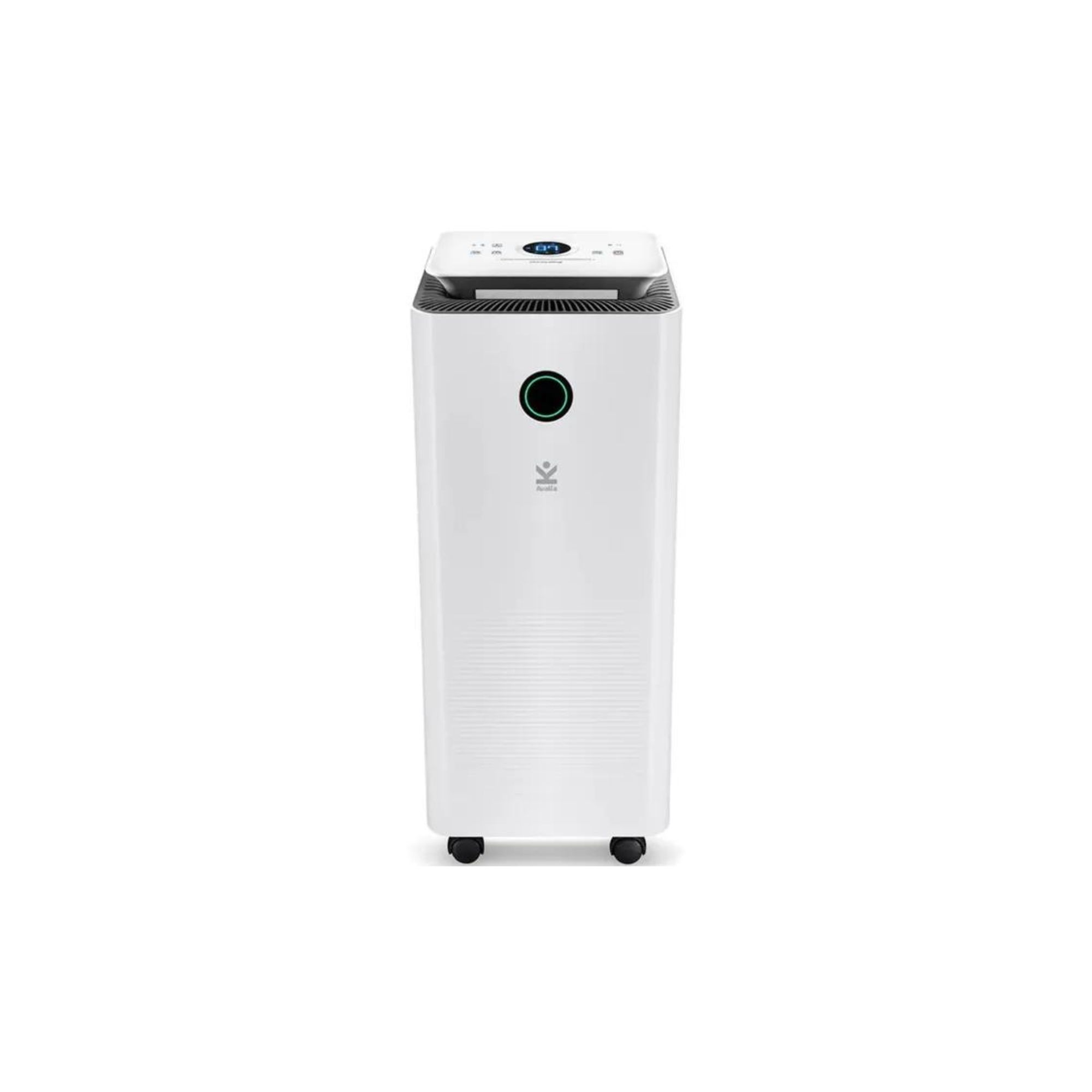
This 'best overall' dehumidifier model holds at least 16L of water, which will indeed help with drying your laundry. The sleek, space-saving Avalla X-150 design rated the overall best on our list, this machine left the air in our home clean and moisture-free.
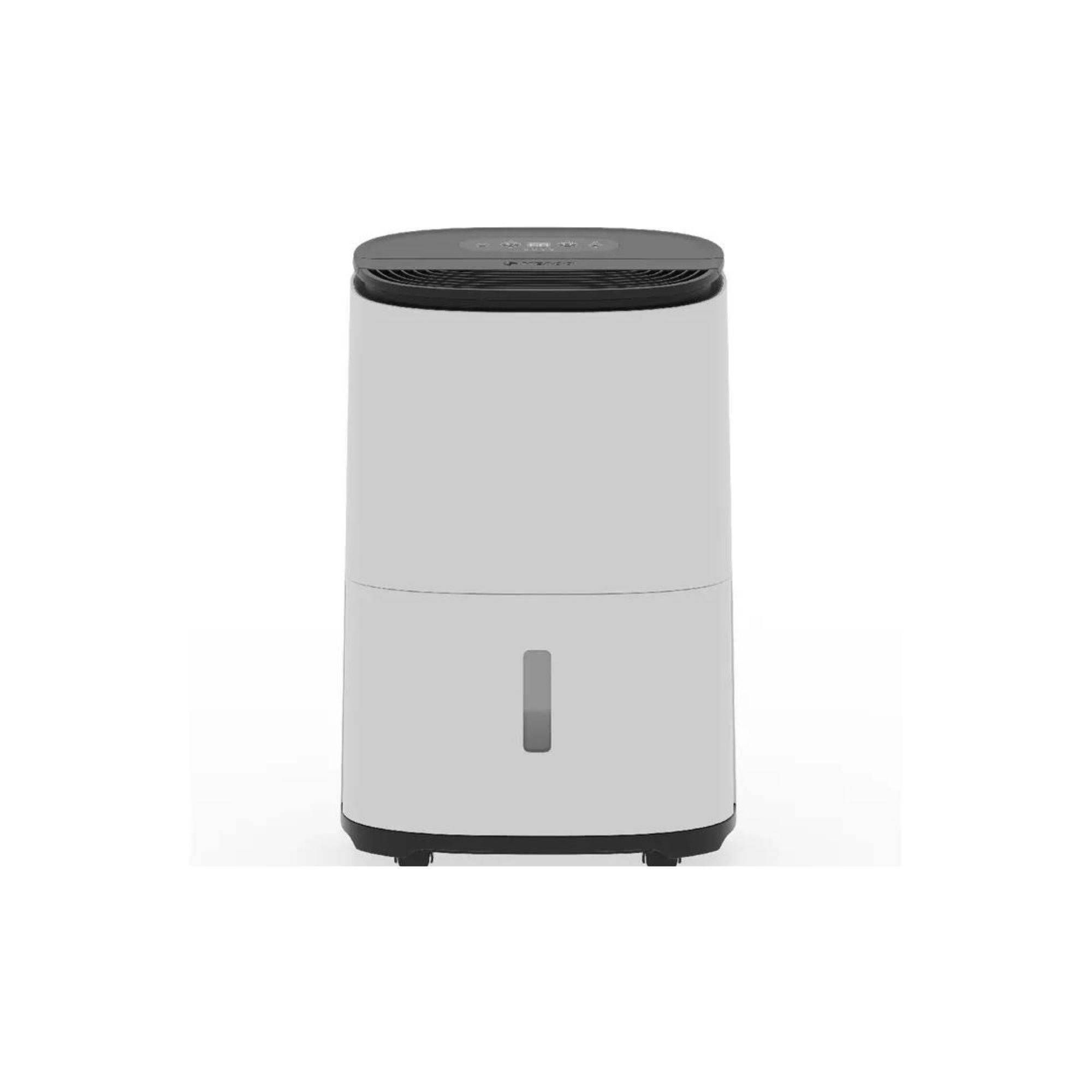
Our MeacoDry Arete One 10L review found this to be a great all-around dehumidifier. It's simple, easy to use, great for families with lots of laundry, and quiet. We found the laundry mode handy for handling wet clothes and general moisture levels around the home.

Chris Michael is the expert co-founder of Meaco. Since its launch in 1991, Meaco has become a leading UK provider of air treatment products and the brand’s products have won a wealth of industry and design awards internationally.
4. Invest in a heated airer
“A heated drying rack reduces drying time significantly. I love the Lakeland Deluxe three-tier that fits two wash loads at one time," says Kathryn Lord, organising expert and founder of More to Organising.
"To dry as much as possible at the same time I use hangers for dresses and jackets, which also helps creases drop out and means less ironing." Just be mindful not to overload your drying rack with heavy materials like denim because the amount you dry could adversely affect the drying time.
While there's no doubt a heated clothes airer is one of the best solutions, it does involve running costs. To help you budget Lynsey explains, "using a heated clothes airer averages roughly between 11p and 15p per hour to run and clothes normally dry within a few hours." Just bear in mind that heavier materials will take longer to dry than lighter fabrics.
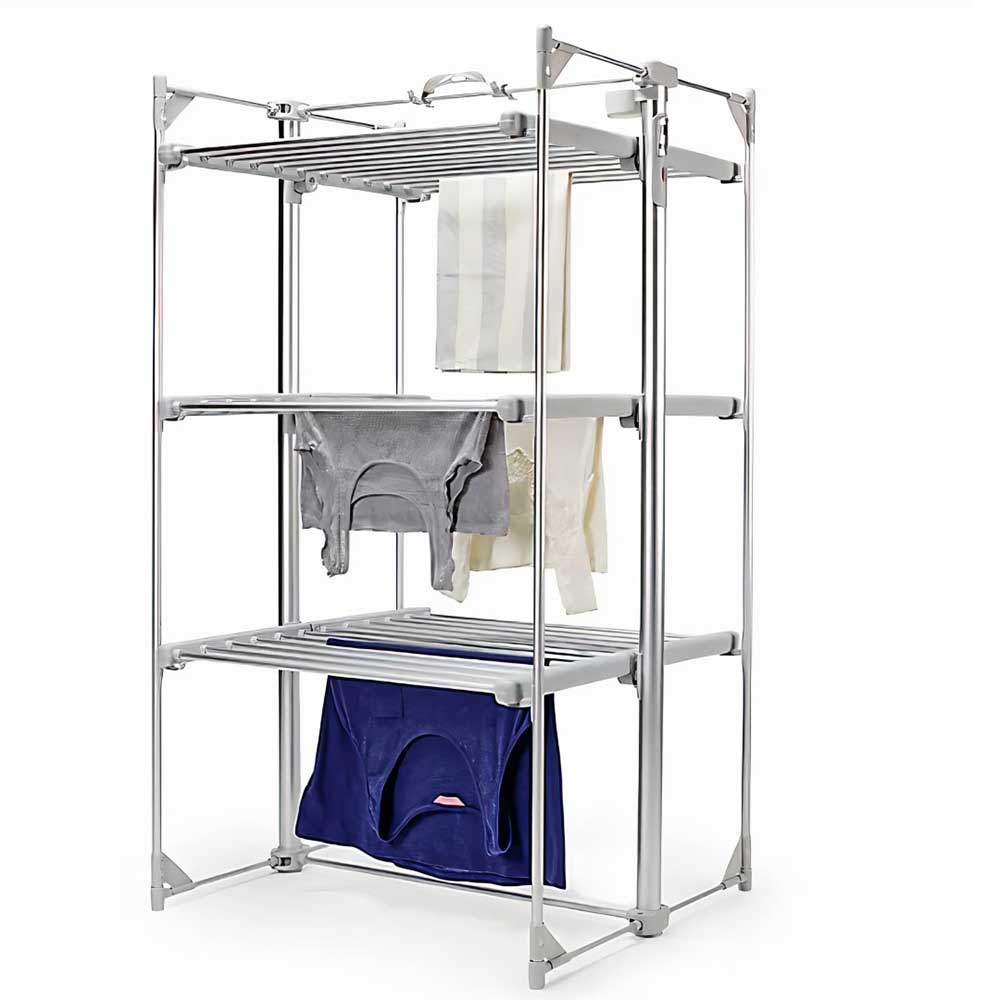
This model is Kathryn's favourite and we really couldn’t recommend this Lakeland model highly enough – it's absolutely one of the best heated clothes airers on the market, and popular for a reason. Read our full Dry:Soon Deluxe heated airer review for all the details.
You can save even more on your next purchase with woman&home's latest Lakeland voucher codes.

Heated airers are often not cheap, and that can be off-putting. However, the Daewoo heated airer is among the most affordable on our list, coming in at £50.62. In terms of a budget solution, we rate this model highly. Just be aware if you’re looking to buy both the airer and the cover the cover is sold separately – which is something we would advise doing but it will cost a little more.
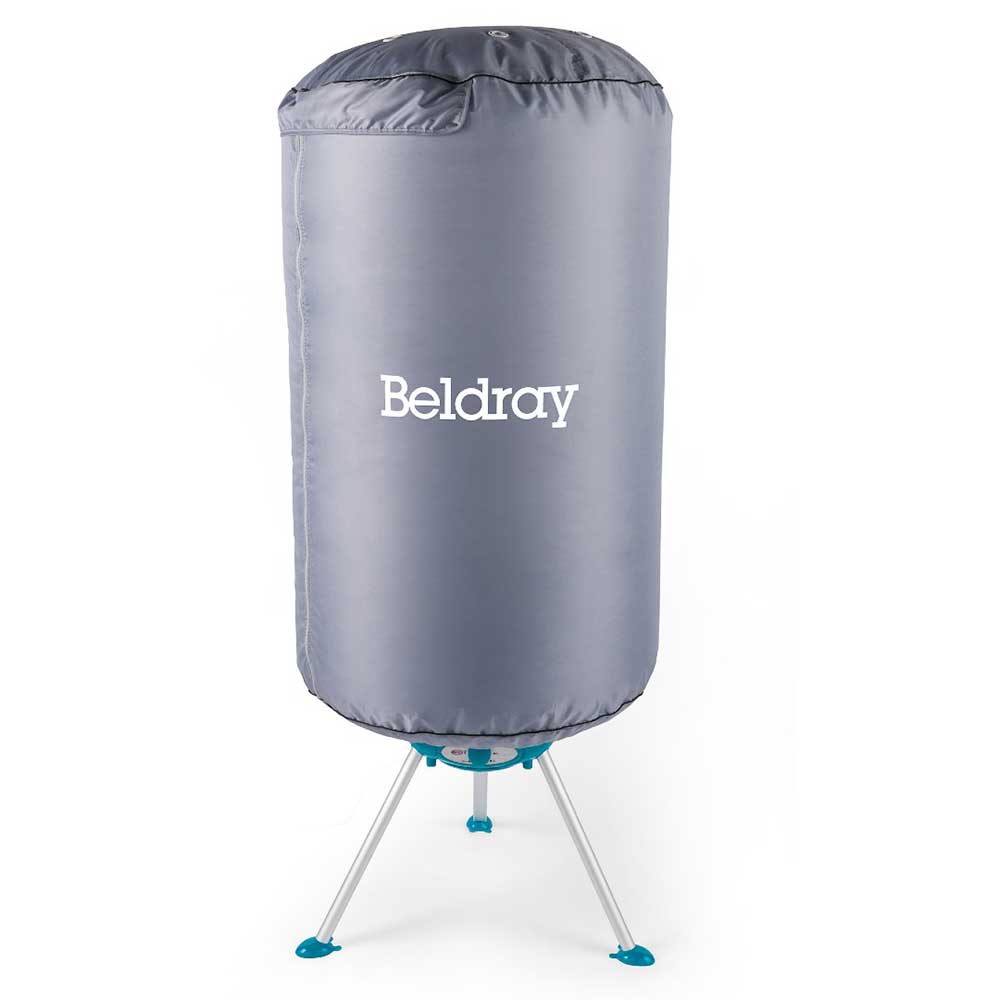
Pods are the dream for faster drying because they contain the heat to speed up the process. This Beldray model is an excellent choice if you’re looking for a savvy pod, especially handy if you're looking to dry delicate clothes vertically without any further creasing. Thanks to its compact size it's ideal if you're looking for a model for a smaller laundry room with less floor space.
5. Create your own drying pod
The most efficient way to dry clothes faster indoors is by using a heated element to speed up the drying process. But if buying a heated airer or drying pod is not within budget why not create your own DIY solution?
You can create an air-drying pod by throwing a bedsheet over the frame of your airer and tucking it down the back of a heated towel rail that may still be on. This essentially creates a cocoon around your washing, enabling it to dry quickly. Just note that you won't be able to dry anything on the top rack of your airer because the bedsheet will be immediately on top of it.
You can also place a sheet on top of your heated dryer, which will have the same effect. "There is an option to buy a cover for my heated clothes airer to keep the heat in but I just use a fitted sheet over the top to help," says Kathryn.
6. Load your clothes dryers efficiently
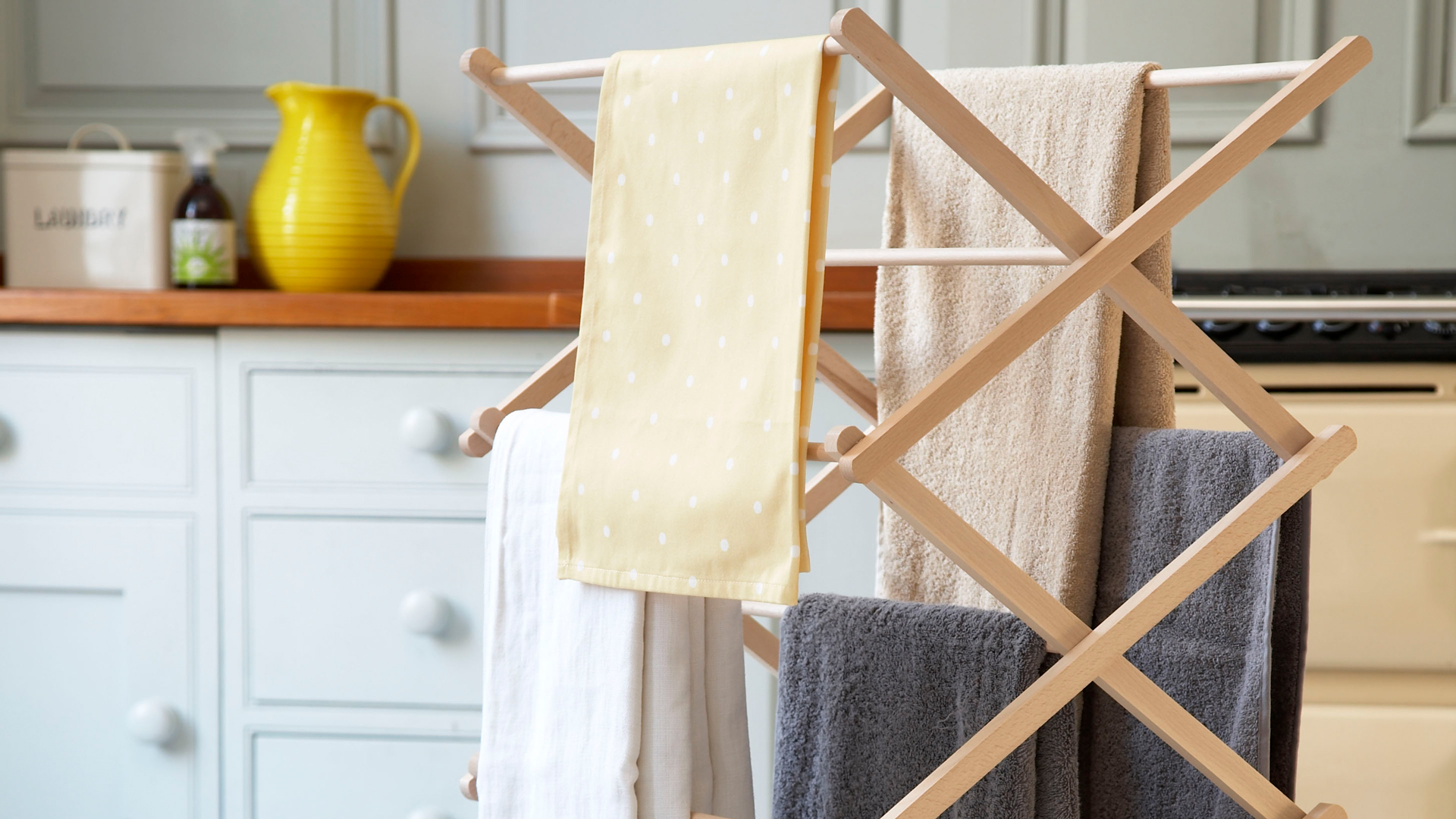
A classic clothes dryer becomes more effective by simply giving more thought to how you load it and where it's positioned. "Drying clothes inside is gentler on fabrics than tossing and tumbling in a dryer and prevents static cling," says laundry expert Deyan Dimitrov, CEO of Laundryheap.
"Place items on a drying rack away from walls to prevent the moisture from being trapped. Hang items individually and with as much space in between them as possible so they are surrounded by more air and will dry more quickly."
If you have a large kitchen then it's also worth placing your rail here after using the oven to make the most of the warmth. Just make sure you have enough space to distance the rail from the hot oven.
7. Rotate and alternate to dry quicker
In addition to not overloading your airer, it's also important to rotate your laundry to expose damp areas and increase airflow to aid with the drying process.
Simply keep an eye on the items while they are drying looking out for signs of any remaining obvious signs of moisture, and moving them accordingly to expose those patches to better airflow.
8. Create a warmer environment without heating
"Making the most of natural sunlight can help to warm houses and dry out any damp air," Deyan explains. "Opening curtains and blinds in the day not only allows the sunlight in to capture the warmth, but it also prevents moisture from being trapped around the windows."
"Using rugs and mats on wooden and stone floors can also help to make rooms feel warmer too by providing extra insulation."
Aside from avoiding dampness, eliminating and preventing condensation also reduces how often you'll need to clean your windows.
9. Blast dry with a hair dryer
Not ideal for reducing your energy bills but a quick and easy solution for blasting away initial dampness if you need something to dry quickly. "Using a hairdryer to dry clothes is another great substitute for drying them in the sun," says Deyan.
"This works better on smaller garments, like underwear and socks, and could considerably reduce your drying load in the long run." Ultra handy when following how to wash your bra to reduce the waiting time for everyday essential items.
Deyan warns, "Make sure you keep the hairdryer arm’s length away from your garments, to avoid the fabrics from overheating. Additionally be careful not to obstruct any airflow to the back of your hairdryer, as this could cause the appliance to heat up too," potentially damaging your best hair dryer.
10. Crack a window to create an airflow indoors
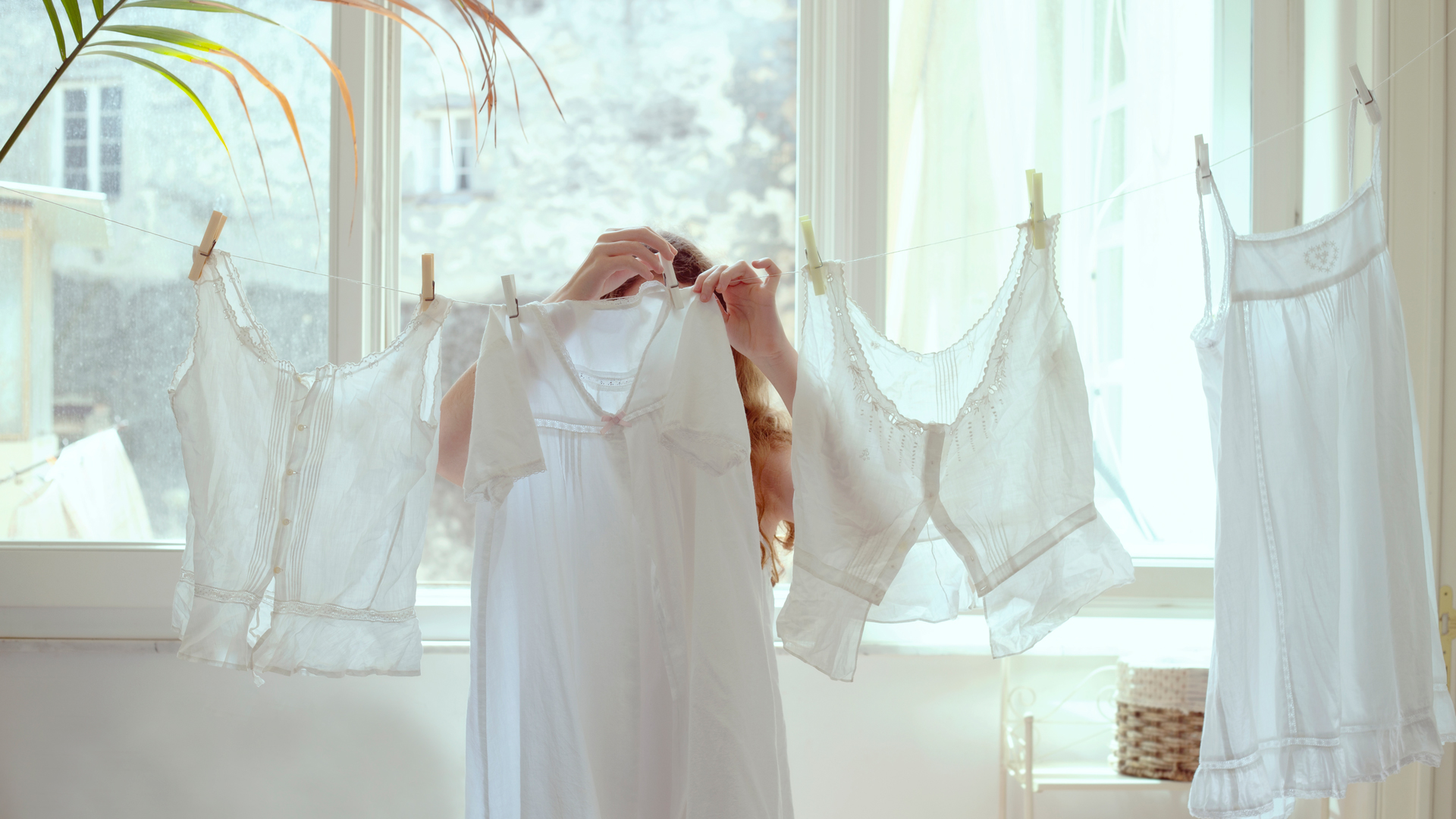
Opening windows enables airflow to speed up the drying process. " To dry your laundry more quickly indoors. hang the clothes on a drying rack or line inside an open window," suggests Blanca Aguirrezabal, decluttering specialist, at TheBlogStuff.
"If this isn't possible, try using a clothesline in a porch area or garage. Make sure to use mesh screens so small objects and bugs don't get caught in the fabric while it's drying.
"A well-aired room and some string will do the trick for this method of drying," says Deyan. "Hang your soggy clothes in front of any entrances – windows, and doors. This will allow air to circulate the room whilst simultaneously drying your clothes."
Importantly for winter months, it doesn’t matter whether the air is particularly warm or cool, any kind of continuous airflow will help your clothes dry faster than usual.
11. Press with a hot iron
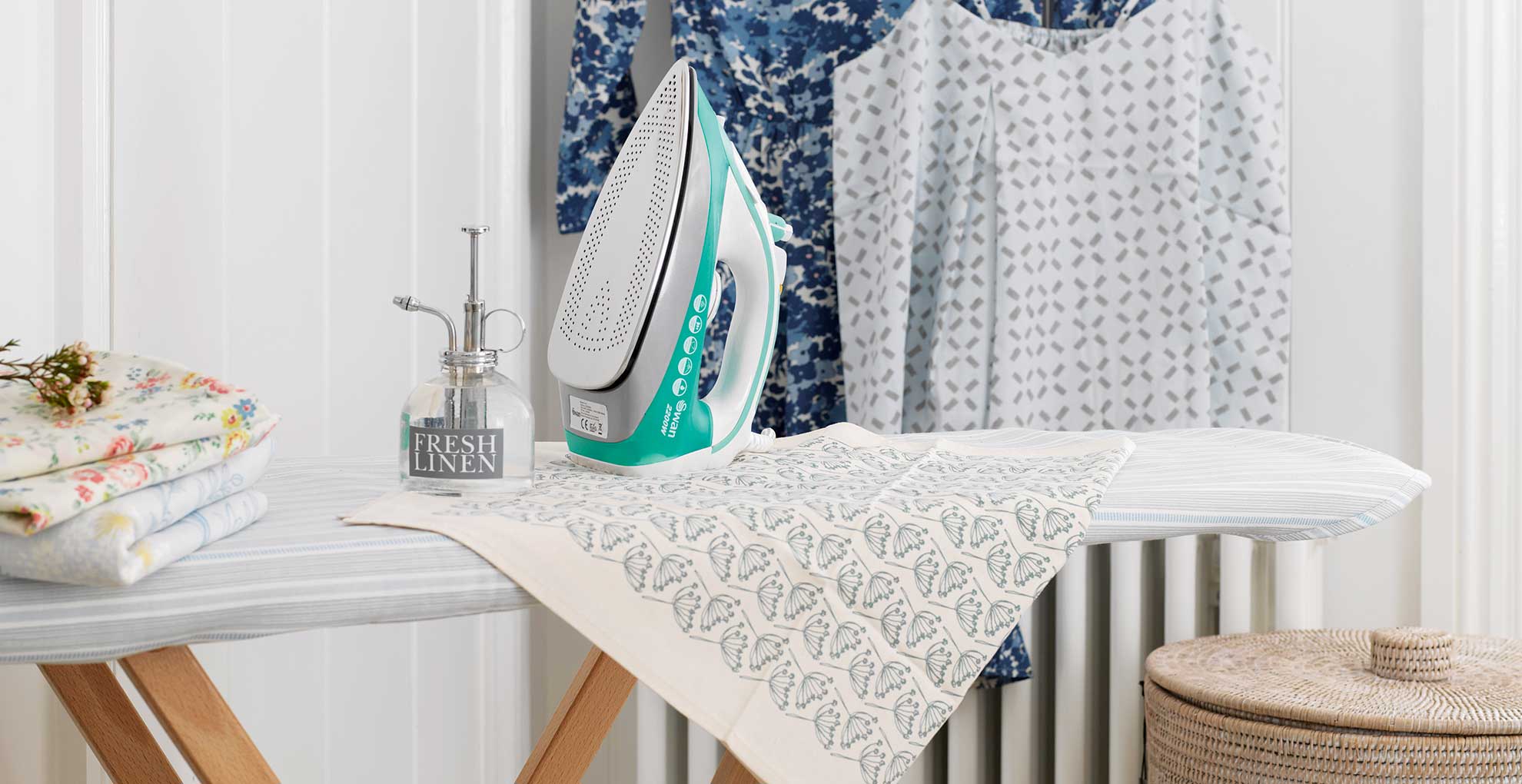
Another neat cheat for using heat to dry things efficiently and quickly is to press with an iron. This is only recommended if you want to dry one or two pieces quickly, it's not a long-term solution.
"Place the freshly washed items onto a flat surface, preferably an ironing board, but a countertop will do if safely protected," suggests Deyan. "Then lay a clean towel over the items and run the iron gently over the top to distribute the heat.
"The iron’s heat will begin to gently dry the clothes, whilst the towel will absorb excess moisture from the fabric fibres and prevent unnecessary heat damage."
12. Install a ceiling rack to utilise rising heat
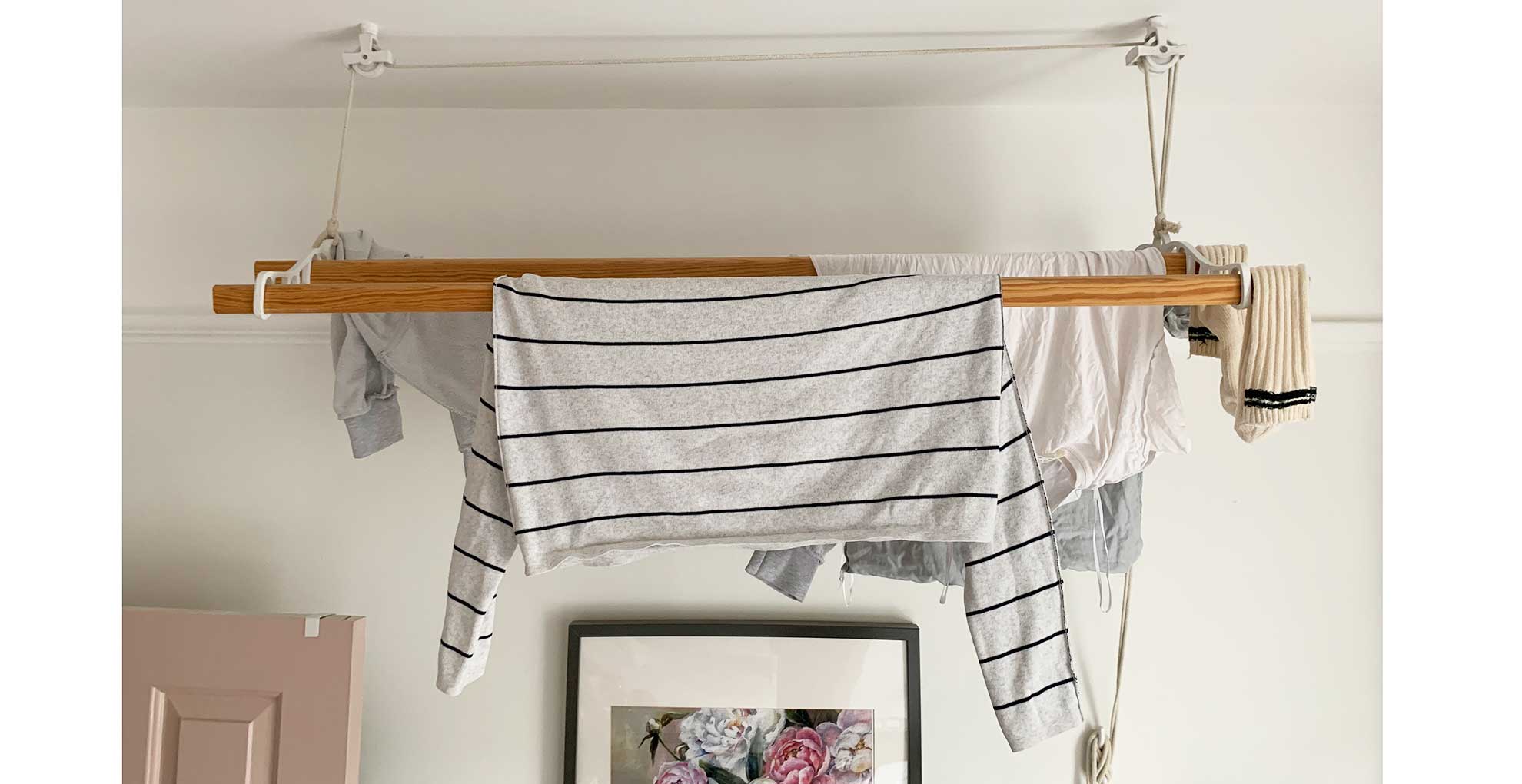
A ceiling clothes pulley is a great way to not only capitalise on any rising heat but also elevate clothes and laundry to free up valuable floor space.
I have one in my kitchen and firmly believe a ceiling clothes airer is a small kitchen essential. This space-saving drying solution means that not only can I utilise the additional heat created from my oven it also means my laundry can hang out for a longer period of time without it feeling in the way.
Allow extra drying time is an easy way to ensure your winter laundry is thoroughly dry before you fold it away – because dampness is the quiet way to generate bad odours. But speaking of bad odours, I wouldn't recommend hanging your laundry out to dry when you are cooking any pungent-smelling foods on the hob, because it may pick up those unwanted smells instead.
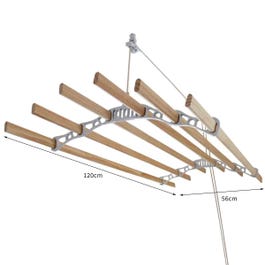
RRP: £78.99 | This simple design is similar in style to my traditional airer, featuring six varnished pine wood rails rather than my four-rail design on a powder-coated cast iron frame. It offers a strong and sturdy clothes airer with a pulley system that can be loaded and lifted to the ceiling to ensure your clothes are kept out of the way whilst they dry. Easy to fit on most ceilings, even sloped roofs, it includes illustrated instructions and a fixing kit.
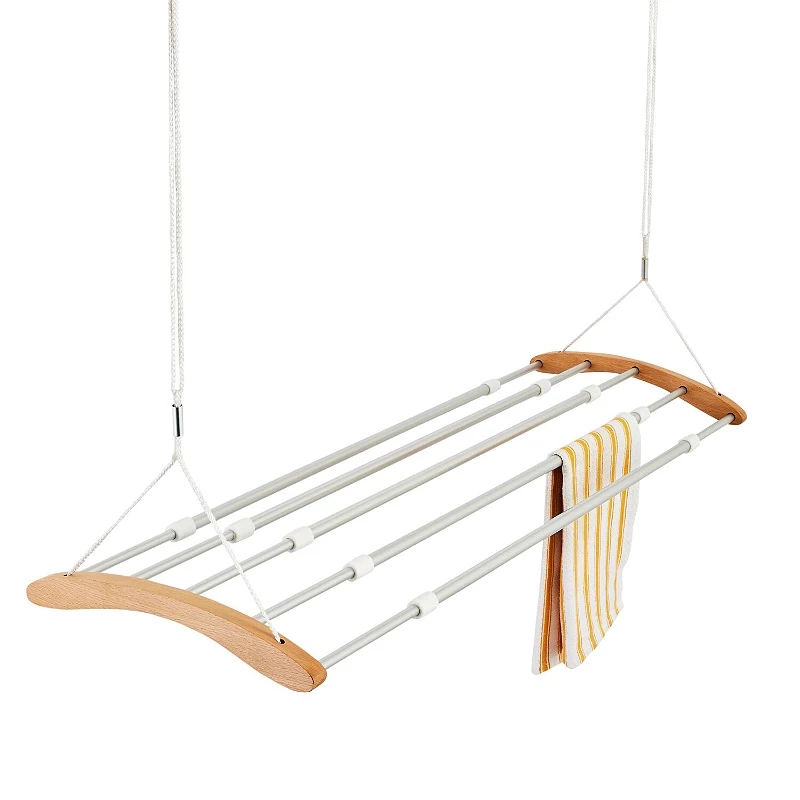 Extendable airer
Extendable airer
RRP: £39.99 | Similar in style to the original pulley design this model is made from beechwood and aluminium, with a slightly more modern aesthetic. The best thing about this functional design is its ability to extend to suit your drying requirements. It provides up to 6.7m of valuable indoor drying space elevated above the floor and surfaces below.
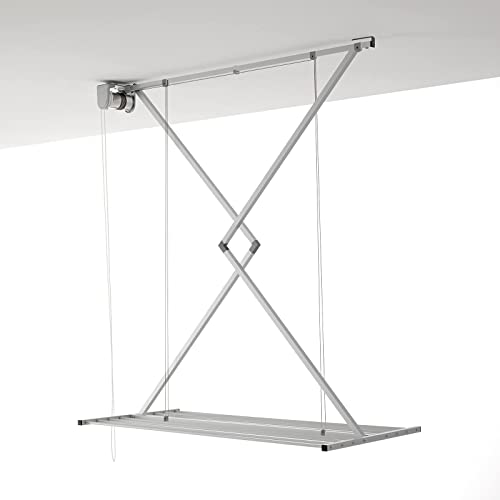
RRP: £129 | This model is perfect for a modern kitchen, to avoid the concept from looking too twee. You can slide this ceiling-mounted clothes drying rack down its 180cm height or stop it at any intermediate position to keep it closer to the ceiling. Featuring 144cm drying rails this contemporary model offers a total of 12 m of drying space, suitable for up to 10 kg of laundry.
13. Only heat one room
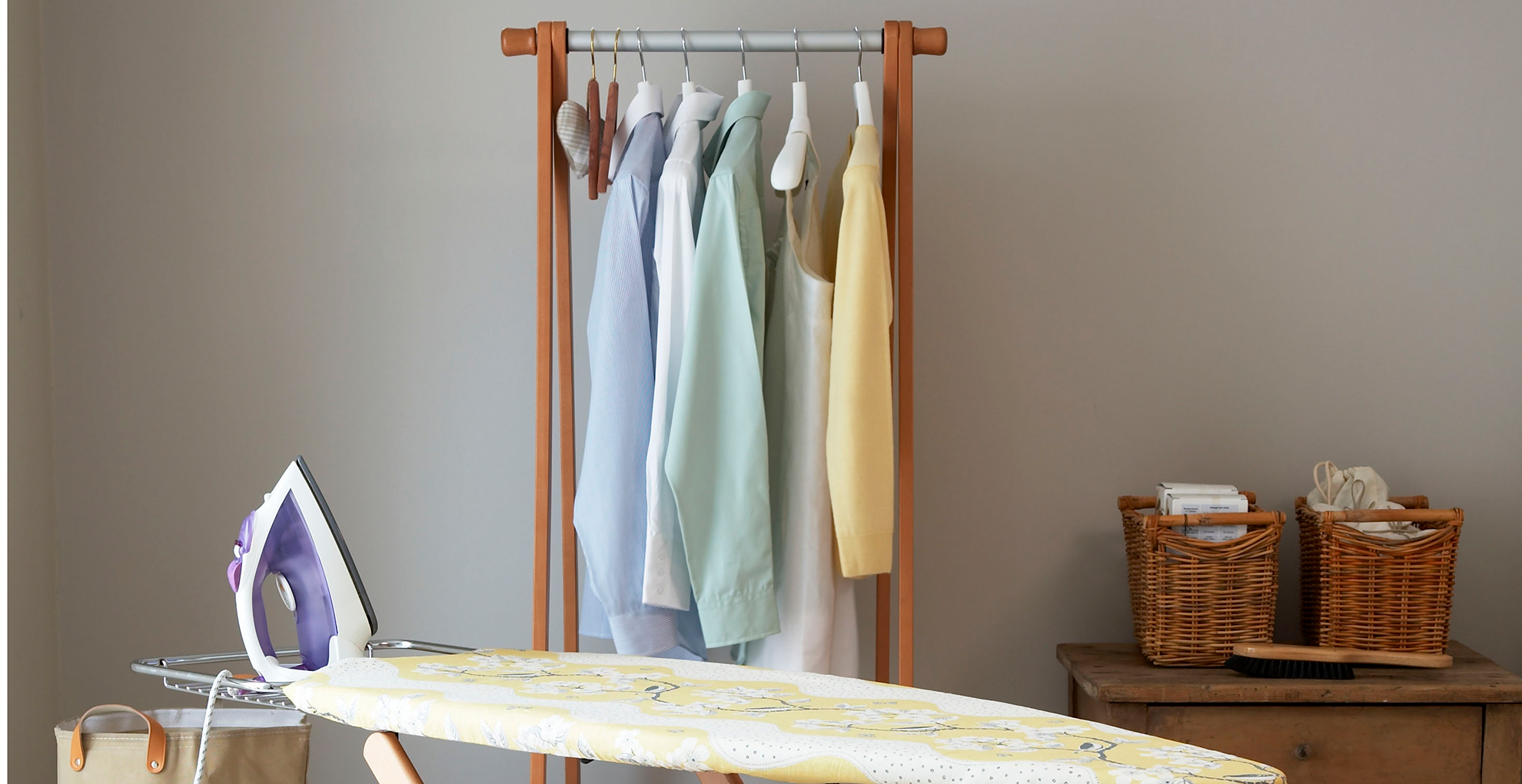
When temperatures are too chilly to dry clothes indoors with alternative methods heat is often the only option. If you are resorting to heating you can still limit the cost and energy use by containing the heat to a dedicated space. And who isn't looking for expert tips to save energy in the home this winter, to stay warm but spend less?
“Consider heating just one room and putting the clothes airer in there to benefit from the warmth as there’s no point switching all radiators on," says Jess Steele, heating technology expert at BestHeating.com.
"When drying clothes try to avoid placing them directly on radiators as this will make the boiler work harder to reach the desired temperature. Once clothes are dry, be sure to allow proper ventilation by opening windows.”

Jess is BestHeating’s expert in heating technology. Her time is focused on understanding everything there is to know about radiators and boilers; from the heating hacks to avoid, the exact date to turn the heating back on and how to maximise radiators efficiency especially throughout winter.
FAQ
How can I dry my clothes indoors without causing damp?
The key to drying clothes indoors without causing dampness is ventilation. “It is important to be aware that regularly drying wet clothes inside can encourage the growth of potentially harmful damp and mould in the home due to excess moisture being introduced to the air,” says Jenny Turner, property manager at Insulation Express.
"Extra moisture in the air is not visible but it will be there," warns Chris, "the dampness from the clothes must go somewhere – and in time, problems such as mould growth, condensation, and musty smells will become apparent, causing damage to wallpaper, carpets, furniture, and windowsills."
“If this moisture which has evaporated from the clothes has nowhere to escape to, it will stick to walls and ceilings which in time can develop into unsightly and dangerous dark damp and mould spots," adds Jenny." To tackle this, always leave a window open in the room where you are drying clothes to encourage airflow to circulate and give the excess moisture in the air a way to escape.
“An electric best dehumidifier can be the key to avoiding damp growing or you can purchase cheap plastic box dehumidifiers from most supermarkets that will soak up moisture well,” Jenny suggests. “You could even pour rock salt onto bowls and leave it on window sills to absorb water from the air as a makeshift solution.”
Try one of the best dehumidifiers for a bedroom to tackle laundry in a dressing room, or one of the best dehumidifiers for a bathroom to seek a non-electric solution.
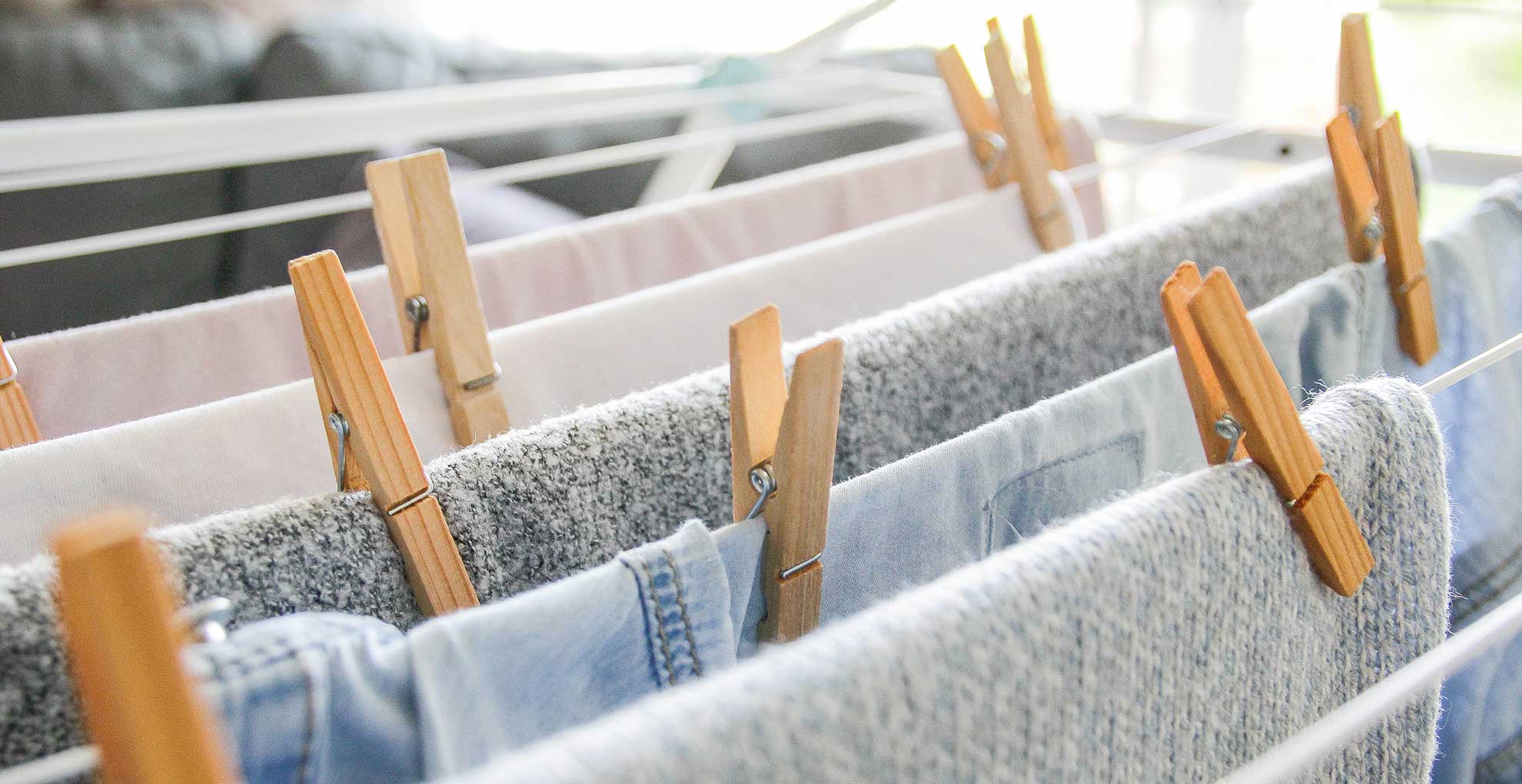
Should you open a window when drying clothes inside?
As the goal is to reduce humidity in your home, especially in the wintertime, you've probably thought about opening a window and this can be a great idea.
"Yes, if possible, though this option becomes unadvisable in wintery or cold weather," advises Gwilym Snook, heated laundry expert at ao.com. "Opening a window helps to reduce the humidity level in the room which in turn can speed up the drying process."
"Yet if it’s very cold or rainy outside, this is where using a dehumidifier in winter comes into its own, as opening a window in these conditions might cool down your space and slow the drying process," he adds.
Where is the best place to dry clothes indoors?
The best place to dry clothes indoors is always the most ventilated area of your home. Even during summer downpours, you may still be able to crack a window and allow airflow to speed up the drying process and relieve some of the moisture from the wet laundry. Even when the summer temperatures drop the air will still be significantly warmer than the cool air of winter, so it helps to leave windows open when and where you can.
In terms of the best place within the home, it's generally best to seek an upstairs room because heat rises, therefore the rooms upstairs should offer a higher temperature than that of any rooms downstairs to speed up drying times.
How to dry clothes indoors during the winter
"When it comes to drying washing, it’s natural that people will hang wet washing on clothes racks to dry indoors instead of using tumble dryers, which are one of the most energy-intensive devices in the home," says Chris Michael, managing director of Meaco, the leading air purification specialist.
"This will be fine at first, but over the coming weeks, the wet washing will take longer and longer to dry as we start to close our windows to keep precious heat in, and the moisture content in the air increases from the clothes that we have been drying over time," Chris continues.
"This build-up of moisture will mean that a load of washing that might have taken a few hours to dry in September will take a couple of days in October, and up to four or five days in November and December."
To avoid this frustration, try these savvy hacks to get your clothes dried quicker during the colder months.
No matter how often you clean your house, racks and piles of laundry are the quickest way to make the place look untidy. We are particularly taken right now with the new Joseph Joseph Eclipse clothes airer to provide a stylish way to hide laundry - we will be reviewing this new launch very soon, so watch this space.

Tamara is a highly experienced homes and interiors journalist with a career spanning over 22 years. Now the Lifestyle Editor of womanandhome.com, she previously spent 18 years working with the style teams at Country Homes & Interiors and Ideal Home. With these award-winning interior teams, she gained a wealth of knowledge and honed her skills and passion for styling and writing about every aspect of lifestyle and interiors.
A true homes and interiors expert, Tamara has been an ambassador for leading interior brands on multiple occasions, including appearing on Matalan’s The Show and presenting at top interior trend forecasting events such as the Autumn Fair and Spring Fair.
-
 Dr Amir Khan reveals the 5 'sneaky' bad habits that may be damaging your health without you realising
Dr Amir Khan reveals the 5 'sneaky' bad habits that may be damaging your health without you realisingThe doctor took to Instagram to discuss the unhealthy habits to break for better work-life balance, sleep, and wellbeing
By Kat Storr
-
 Kate Middleton is that you? Her floral dress, side-swept fringe and pink blazer deserve a comeback
Kate Middleton is that you? Her floral dress, side-swept fringe and pink blazer deserve a comebackThe building blocks for the Princess’ signature style were always there in her looks and this outfit can easily be updated for 2025.
By Emma Shacklock